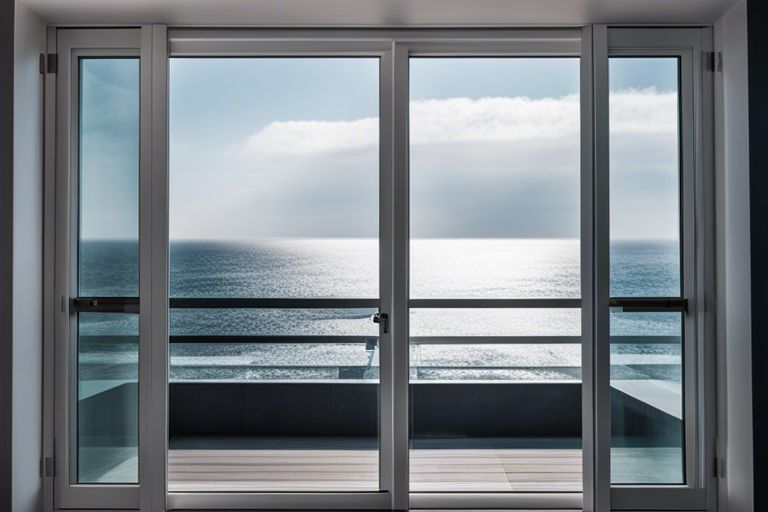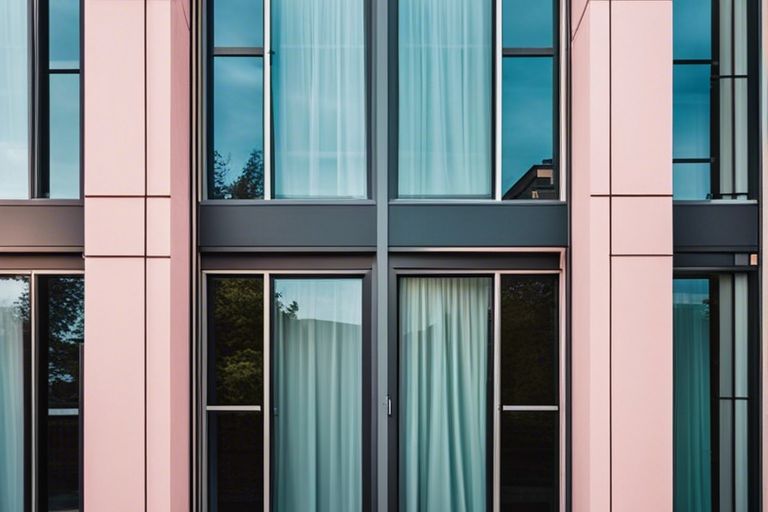When it comes to constructing a building, one area that requires meticulous attention is the foundation-to-curtain wall transition. This juncture is crucial for the structural integrity of the building and must be executed with precision and care. Poorly designed transitions can lead to water infiltration, air leakage, and thermal inefficiencies, compromising the building’s durability and energy efficiency. In this blog post, we will discuss the best practices for achieving seamless and robust foundation-to-curtain wall transitions, ensuring a high-performing and long-lasting building envelope. By following these guidelines, construction professionals can mitigate risks and enhance the overall quality of their projects.
Key Takeaways:
- Understanding the Importance: Recognise the significance of foundation-to-curtain wall transitions in ensuring structural integrity and preventing water penetration.
- Proper Design Consideration: Implement proper design measures such as the use of compatible materials, detailing of joints, and incorporation of drainage systems to achieve effective transitions.
- Quality Inspection: Conduct regular inspections to identify potential issues early on and address them promptly to maintain the performance and longevity of the building envelope.
Design Considerations
When it comes to the seamless integration of foundation-to-curtain wall transitions, a crucial aspect that cannot be overlooked is the design considerations. It is imperative to carefully assess load transfer mechanisms and anticipate movement and tolerances to ensure the structural integrity and functionality of the building.
Assessing Load Transfer
Assessing load transfer from the foundation to the curtain wall is essential to prevent any potential structural issues. It is vital to consider the varying loads that will act on the building throughout its lifespan and ensure that the transition details are designed to effectively transfer these loads. By conducting thorough structural analysis and calculations, engineers can determine the most suitable load transfer mechanisms for the specific project requirements.
Moreover, it is crucial to collaborate closely with all stakeholders, including structural engineers, architects, and contractors, to ensure that the load transfer details are seamlessly integrated into the overall building design. This collaboration will help identify potential challenges early on and address them proactively to avoid costly revisions during the construction phase.
Anticipating Movement and Tolerances
Anticipating movement and tolerances is another critical aspect when designing foundation-to-curtain wall transitions. Buildings are subjected to various environmental factors such as wind, thermal expansion, settlement, and seismic activity, which can lead to movement within the structure. It is essential to anticipate these movements and design the transition details with appropriate tolerances to accommodate such changes without compromising the building’s integrity.
By incorporating flexible connections and expansion joints at the transition points, engineers can allow for natural building movements while maintaining structural stability. This proactive approach to anticipating movement and tolerances will help prevent potential damages and ensure the long-term performance of the building.

Material Selection
Compatibility and Durability
When selecting materials for foundation-to-curtain wall transitions, it is crucial to consider their compatibility and durability. Choosing materials that work well together and can withstand environmental factors is essential to ensure the longevity of the transition detail.
Materials with high durability such as concrete, steel, or certain types of stone are recommended for areas where the foundation meets the curtain wall. Ensuring that the materials used have similar expansion and contraction rates can help prevent cracking and other potential issues over time.
Thermal and Moisture Protection
Another important aspect to consider when selecting materials for foundation-to-curtain wall transitions is thermal and moisture protection. It is vital to choose materials that can effectively prevent heat loss and moisture infiltration in this critical junction point.
Materials such as insulating concrete forms (ICF), waterproof membranes, and high-quality sealants can be utilised to enhance thermal and moisture protection at the transition detail. Proper insulation and moisture barriers are key to maintaining the overall performance and integrity of the building envelope.
For thermal and moisture protection, it is essential to conduct thorough research and consult with experts to determine the most suitable materials for the specific project requirements. Investing in high-quality materials that offer superior thermal and moisture resistance will ultimately result in a more durable and energy-efficient building.
Installation Techniques
Ensuring Proper Alignment and Connection
When transitioning from a foundation to a curtain wall, it is vital to ensure proper alignment and secure connection between the two elements. Any misalignment or insecure connection can lead to structural instability and compromise the overall integrity of the building.
To achieve proper alignment, careful measurement and accurate placement are essential. Using level tools and following manufacturer guidelines for installation can help in ensuring a seamless transition that is both visually appealing and structurally sound.
Weatherproofing and Sealing
One of the most critical aspects of the foundation-to-curtain wall transition is weatherproofing and sealing. Proper sealing prevents water infiltration, which can cause damage to the building over time.
Utilising high-quality sealants and following recommended installation techniques is crucial. Regular maintenance checks and prompt repairs can help in ensuring that the transition remains watertight and protects the building from potential water damage.
In addition to using sealants, incorporating flashing materials can provide an extra layer of protection against water ingress at the transition point. Ensuring that the flashing is correctly installed and integrated with the surrounding materials is key to long-term weatherproofing success.

Maintenance and Inspection
Ensuring regular maintenance and inspections of foundation-to-curtain wall transitions is essential to preserving the integrity and longevity of the building structure. By implementing a proactive approach, building owners can minimise the risk of costly repairs and potential safety hazards.
Routine Check-ups and Longevity
Regular routine check-ups of foundation-to-curtain wall transitions are vital to detect any early signs of wear and tear, water infiltration, or movement. Inspection should include a thorough examination of sealants, flashings, and joints to identify any areas that may require immediate attention. Ensuring the longevity of these transitions involves timely repairs and maintenance to prevent any further deterioration that could compromise the building’s stability.
By conducting routine inspections and addressing any issues promptly, building owners can extend the lifespan of their structure and avoid costly repairs down the line. It is recommended to schedule regular maintenance checks by qualified professionals to ensure that any potential problems are identified and resolved promptly.
Identifying and Addressing Common Issues
Common issues that may arise in foundation-to-curtain wall transitions include sealant failure, water penetration, and thermal movement. These issues can lead to water damage, mould growth, and structural instability if left unattended. Identifying and addressing these common issues early on is crucial to maintaining the building’s overall performance and preventing more significant problems.
Regular inspections should focus on checking the integrity of sealants, assessing any signs of water damage, and monitoring any movement in the transitions. Prompt action should be taken to repair any deficiencies identified during the inspection process, ensuring the structural integrity of the building is not compromised.

Foundation-to-Curtain Wall Transitions – Best Practices
Ensuring proper foundation-to-curtain wall transitions is crucial in maintaining the structural integrity and weather resistance of a building. By adhering to best practices such as using compatible materials, creating effective drainage systems, and allowing for movement, potential issues like moisture infiltration and thermal bridging can be avoided. Proper planning, design, and construction techniques are essential to achieve a seamless connection between the foundation and curtain wall, ultimately contributing to the longevity and performance of the building. Following these guidelines will result in a well-constructed and durable structure that meets the necessary standards for quality and safety.
FAQ
Q: What are some common issues in Foundation-to-Curtain Wall Transitions?
A: Common issues in Foundation-to-Curtain Wall Transitions include water infiltration, structural instability, and thermal bridging.
Q: How can water infiltration be prevented in Foundation-to-Curtain Wall Transitions?
A: To prevent water infiltration, it is essential to properly seal the joint between the foundation and curtain wall with waterproofing membranes and ensure proper drainage mechanisms are in place.
Q: What are the best practices for achieving a seamless Foundation-to-Curtain Wall Transition?
A: Best practices for achieving a seamless Foundation-to-Curtain Wall Transition include thorough planning, coordination between trades, using compatible materials, and following industry standards and regulations.






